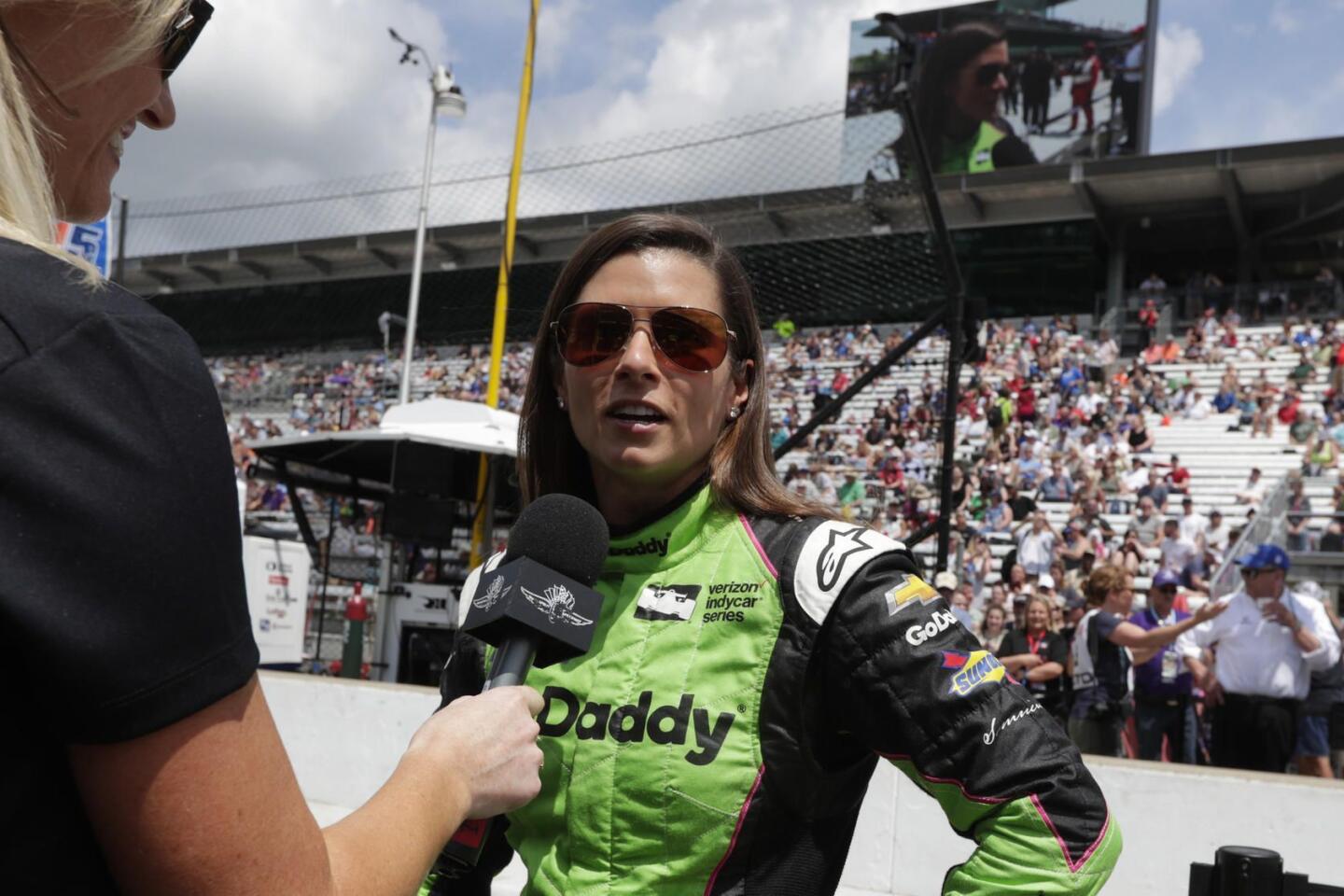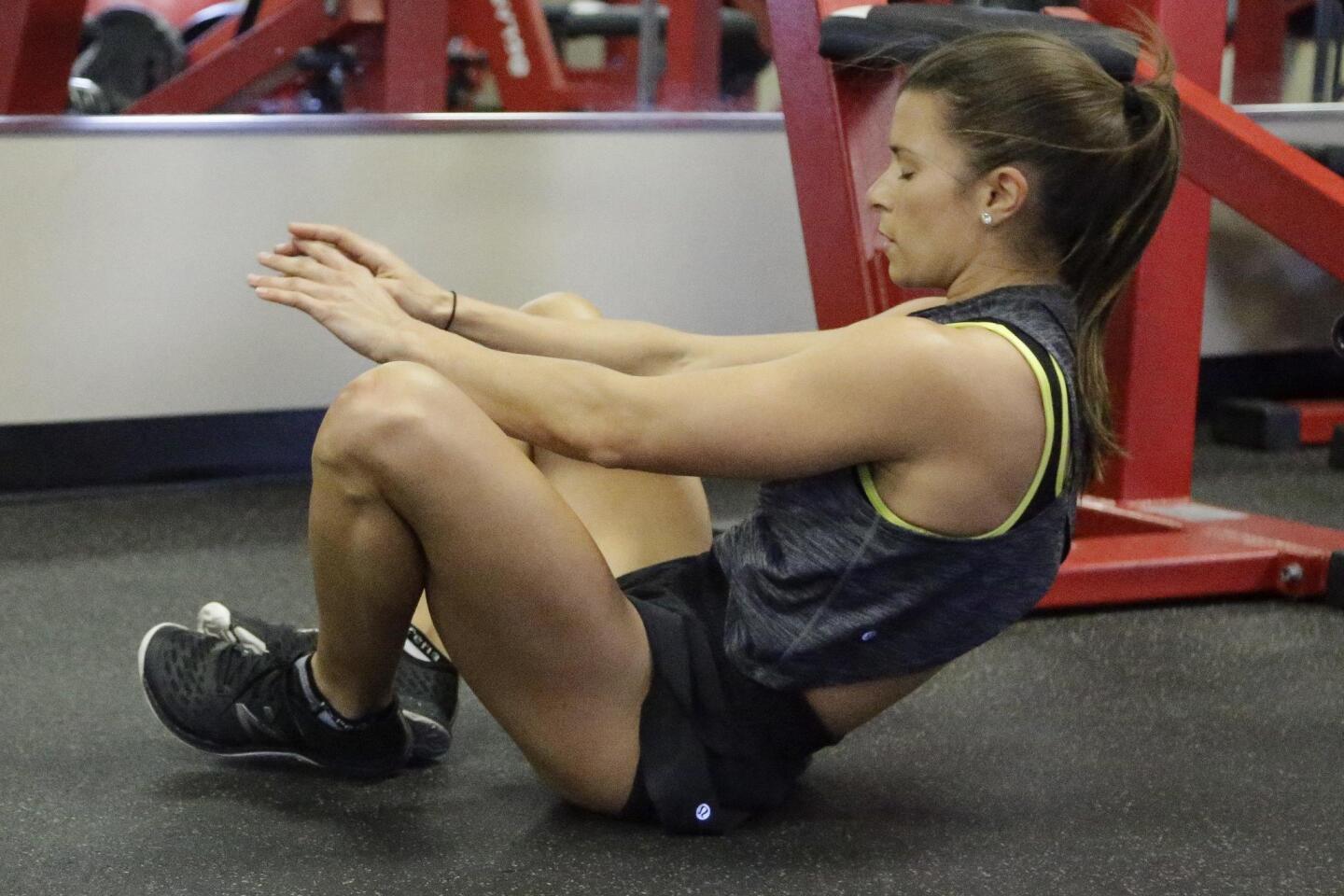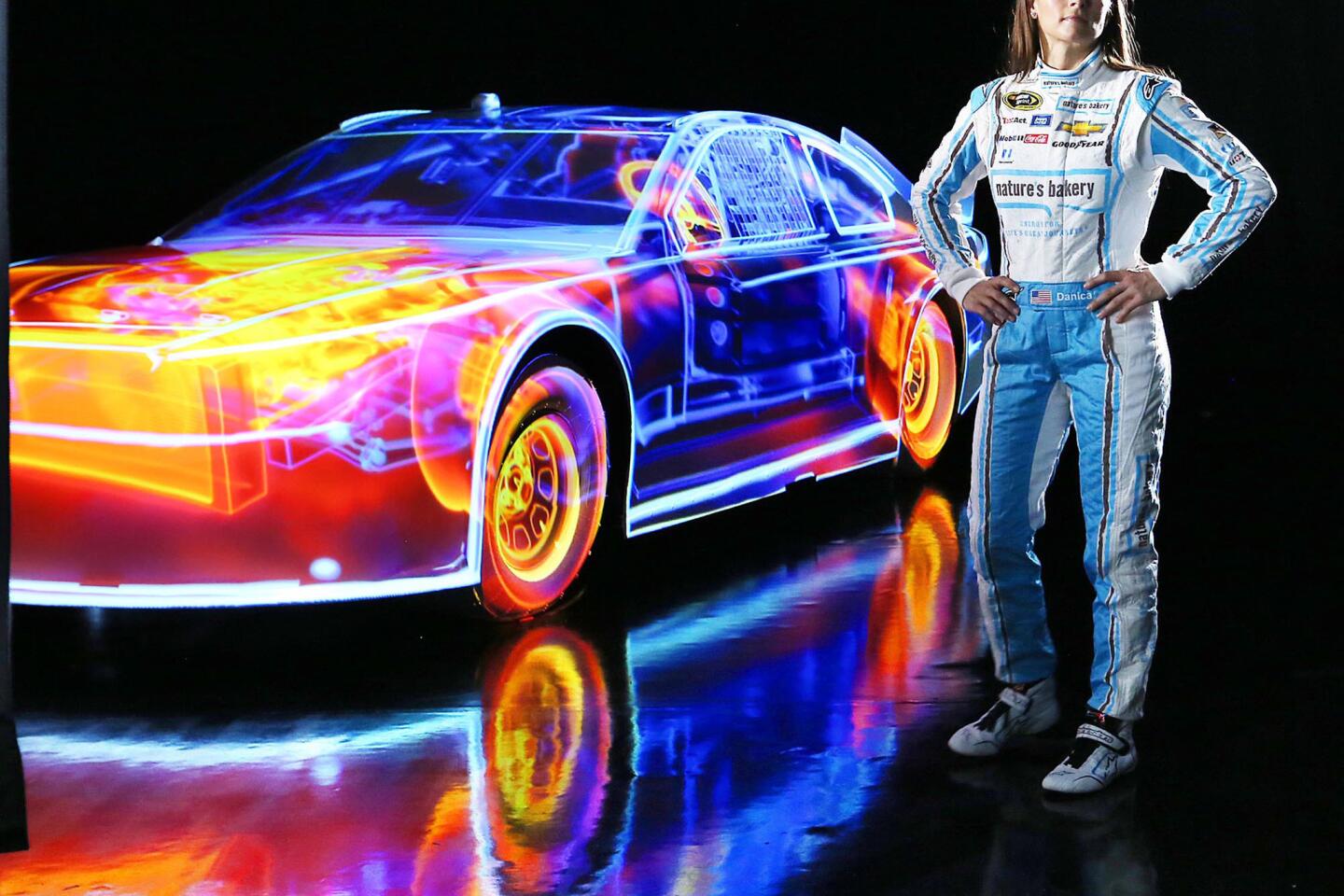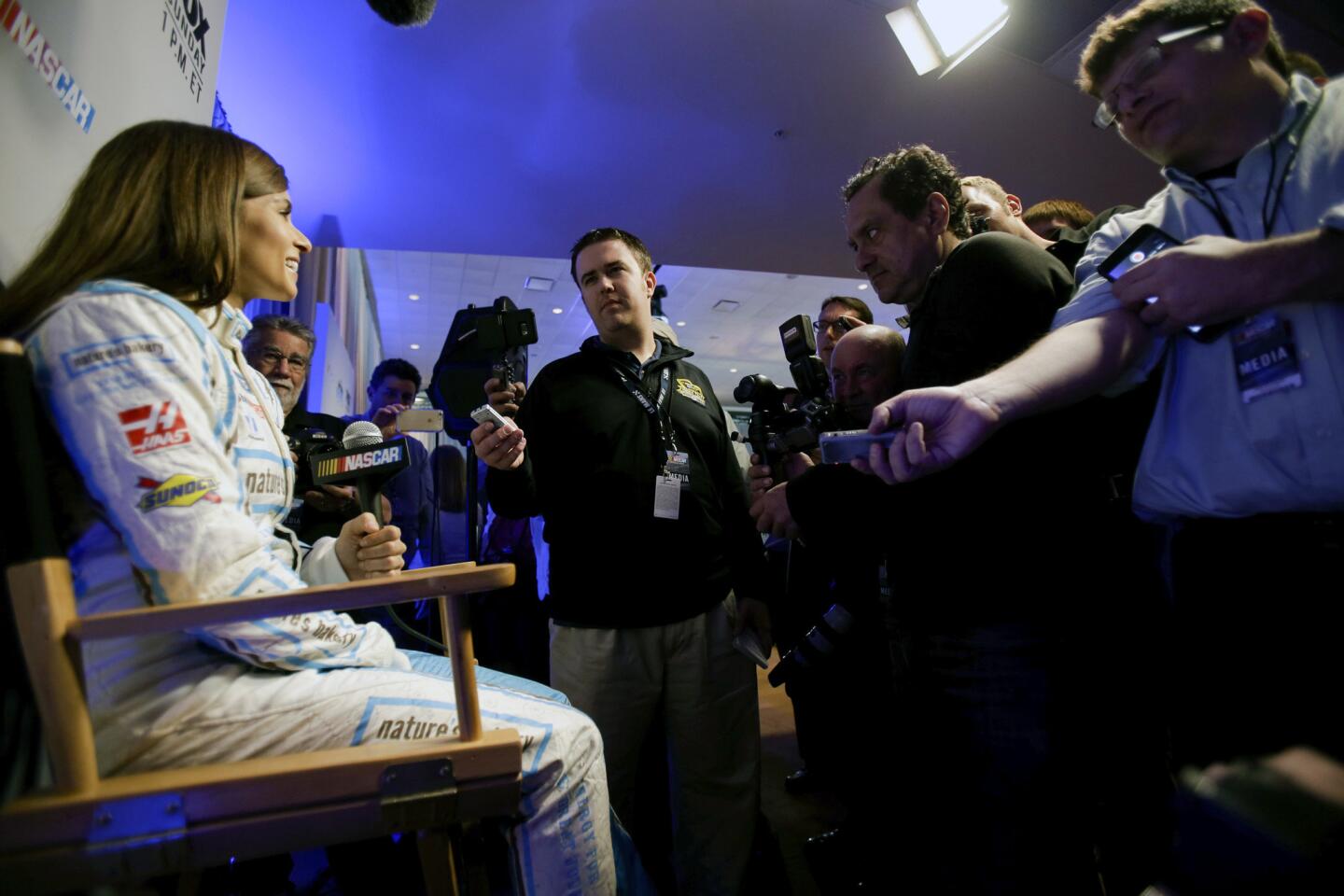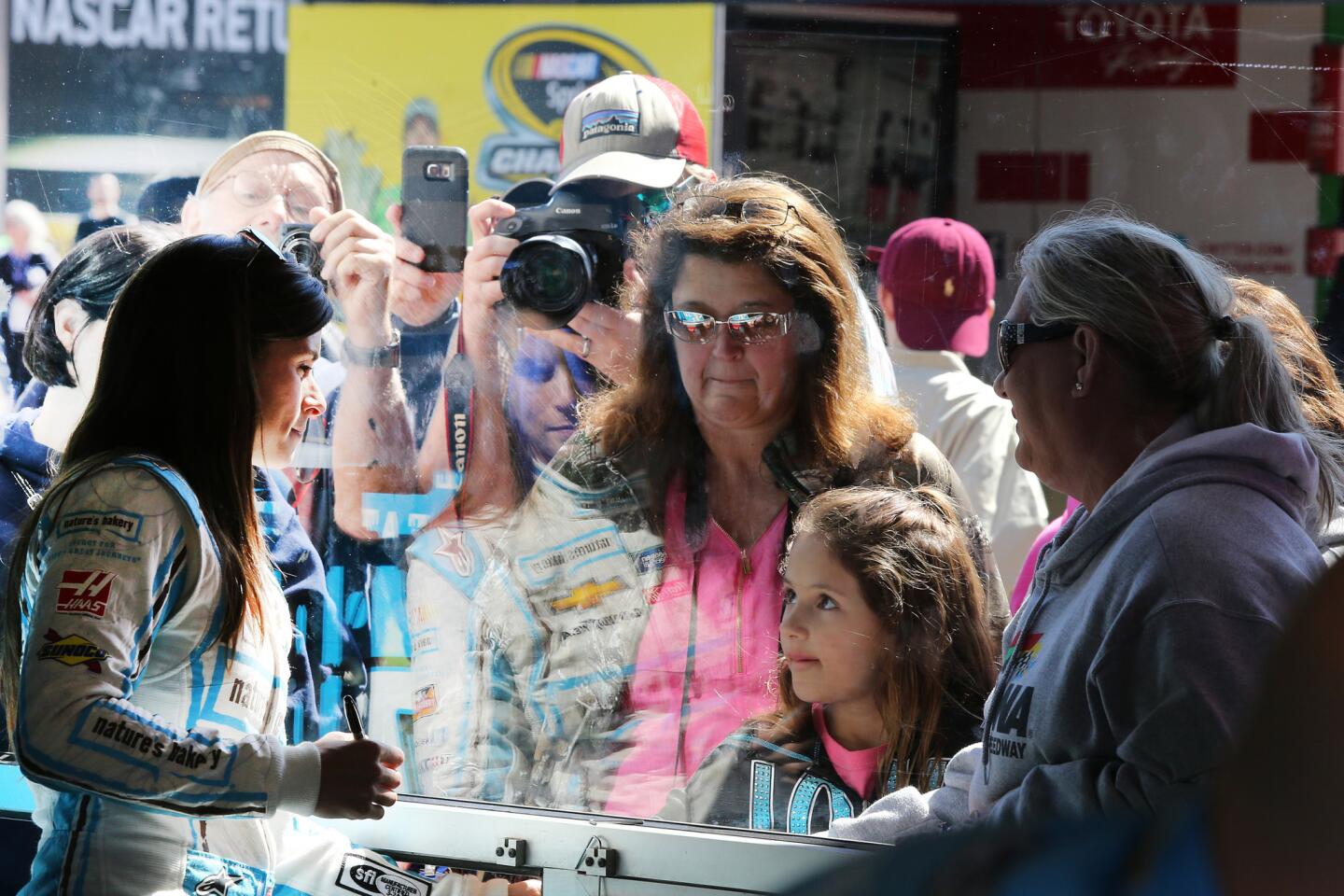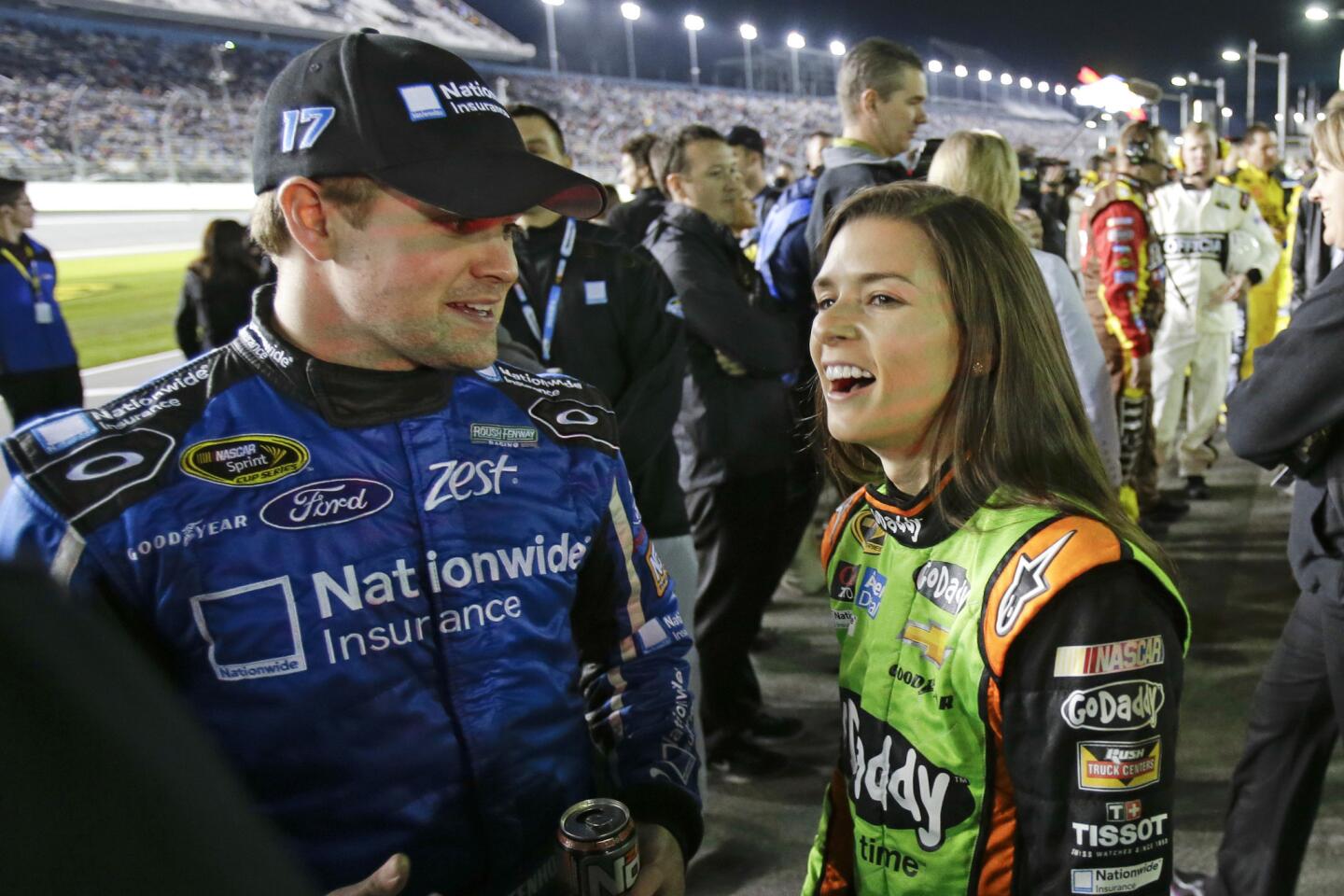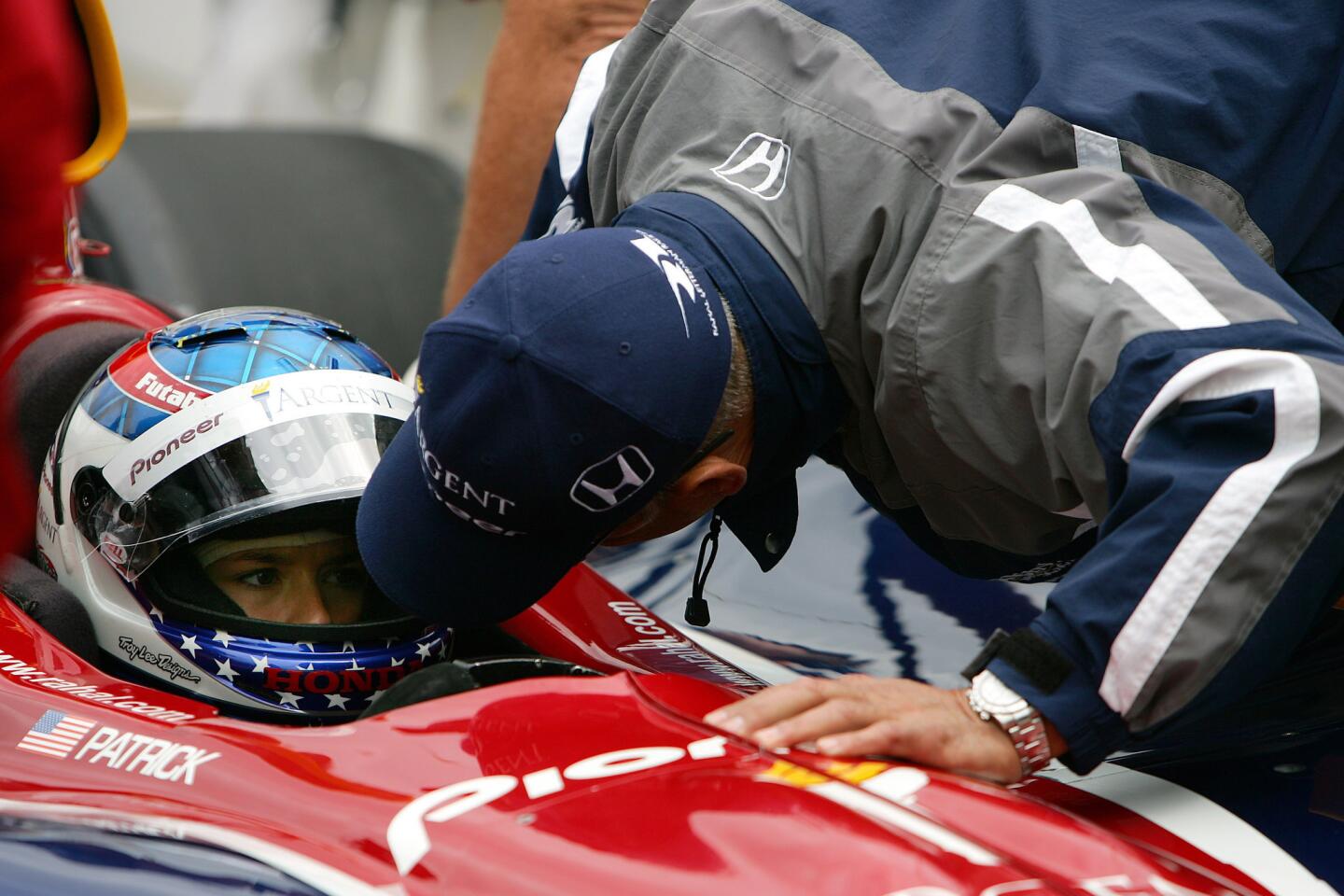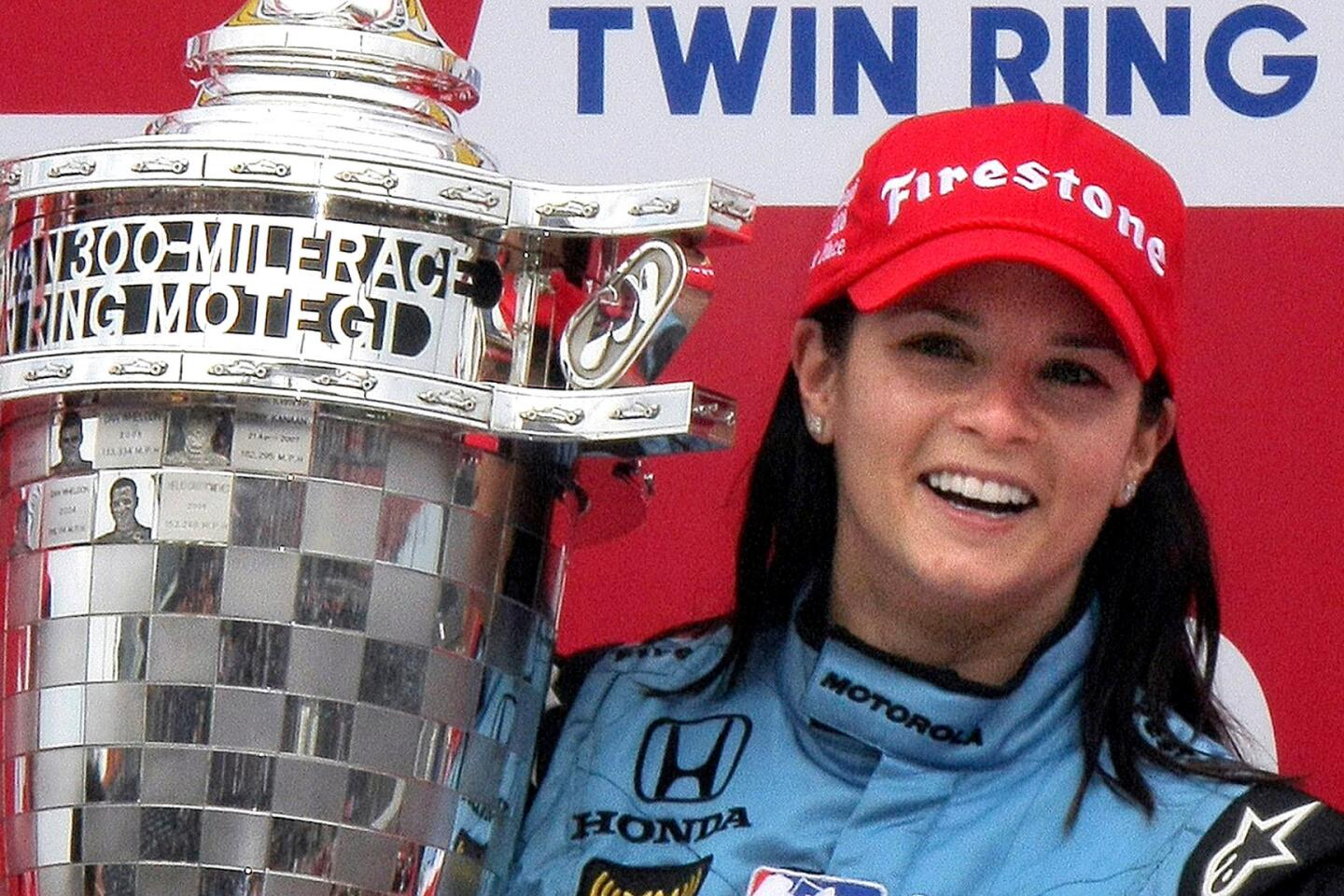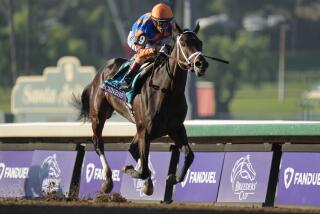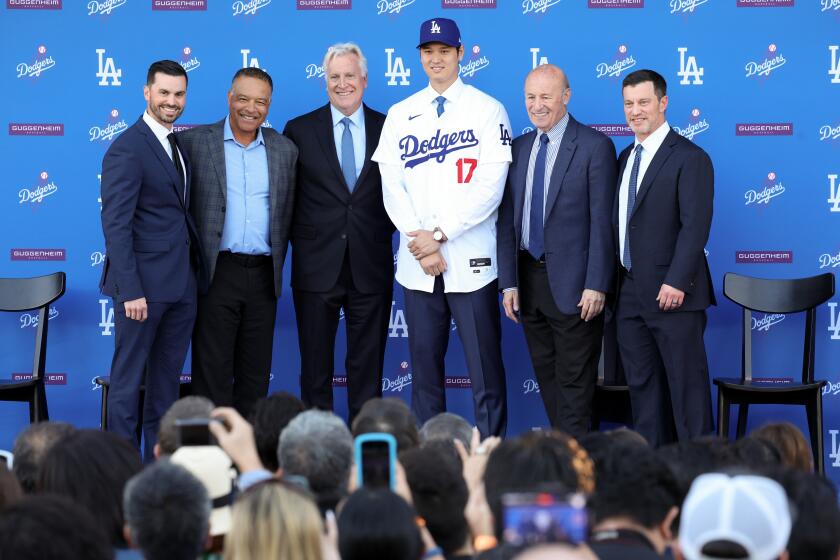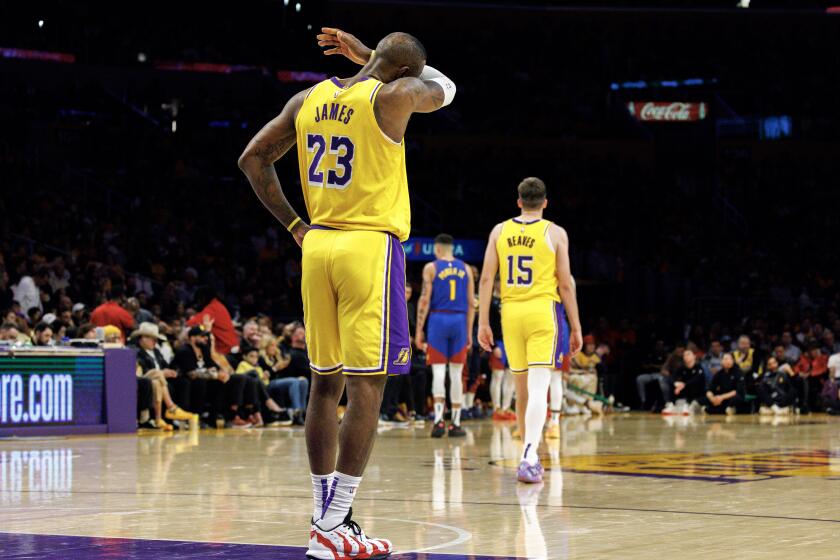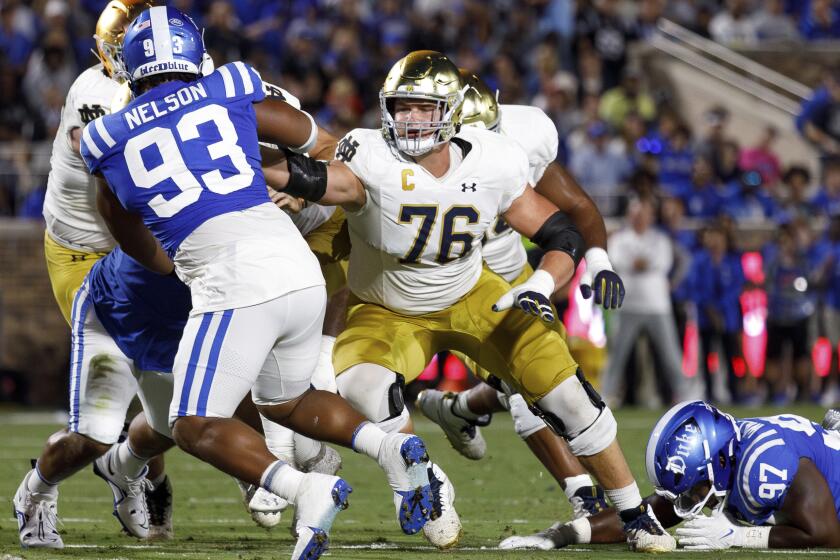Danica Patrick’s final race at Indy 500 comes with a hotly debated legacy
Danica Patrick’s race car is painted in a lustrous neon green one last time, a hue that ensures its “look at me” quality even when the car is a 230-mph blur.
The color is apropos of Patrick and her racing career, which she’s ending Sunday with a final attempt to win the Indianapolis 500, the race that initially made her famous in 2005.
From that race forward, Patrick — often driving the shiny green car favored by her and her longtime main sponsor, the web services firm GoDaddy Inc. — has been the driver everyone watched, analyzed and endlessly debated.
That was due not only to her on-track achievements as a female in a male-dominated sport, but also to her relentless self-promotion, which together earned her the one-name celebrity of being simply “Danica.”
“I can’t think of a better way to end my racing career than at Indianapolis for the 500,” the 36-year-old Patrick said in an interview. “I can’t think of a more cool way to be done.
“I mean, to finish up at a place that has so many good memories for me, and at the biggest race of the year for Indy cars and arguably the biggest race of the year, period,” she said.
Patrick achieved several firsts as a woman in the IndyCar and NASCAR racing series, and in doing so became a role model for countless young women and their parents who admired her feats, tough persona and unflagging determination.
No less than seven-time NASCAR champion Jimmie Johnson tweeted earlier this year: “Thank you @danicapatrick for being a strong role model to the little girls in my life,” referring to his two young daughters.
Patrick’s fame also was burnished by her blunt, outspoken manner, her savvy marketing of her personal “brand” that earned her millions of dollars in endorsements, and by the outsized media attention she always received.
Patrick’s overall record on the track was middling; she had one victory in 13 years of big-league racing. That fueled the debate about whether she deserved the attention she received and made the Roscoe, Ill., native one of the most polarizing figures in sports.
“I don’t know that we’ve seen someone who is so popular when not performing as well,” said Greg Goldring, senior director of sports and entertainment at the Marketing Arm, a marketing agency.
Her impact on motor racing will be argued long after the 102nd running of the iconic race, one of the biggest one-day sporting events in the world. Patrick is adamant that she’s not going to just circle the track as more than 250,000 spectators and millions more on television look on.
“I’m here to win the race,” she said.
Despite her pioneering achievements on the track, there might not be another Danica Patrick in racing for some time, said Eddie Cheever, the 1998 Indy 500 winner who’s now a racing analyst with ABC, which is televising the event.
“I thought we would have seen more of a wave of young women” trying to follow in her footsteps, but “I don’t know of one person on the horizon,” Cheever said.
This year’s Indy 500 is the second race in Patrick’s swan song, dubbed the “Danica Double.”
The first race was NASCAR’s season-opening Daytona 500 in February. After getting a prerace kiss from boyfriend Aaron Rodgers, the Green Bay Packers’ star quarterback, she finished 35th after her car was collected in a crash.
Now, despite having not driven an Indy-style car for several years, during which the car’s design has changed considerably, Patrick has been nearly flawless this month at Indianapolis Motor Speedway.
Patrick also has a car capable of winning, one prepared by the team of IndyCar driver-owner Ed Carpenter, who won the pole position for the 200-lap race.
She qualified seventh in the 33-car field with an average speed of 228.090 mph on Indy’s 2.5-mile rectangular oval.
That was faster than three-time Indy 500 winner Helio Castroneves and former Indy 500 winners Tony Kanaan, Ryan Hunter-Reay and Takuma Sato, who won last year.
As usual, Patrick’s on-track exploits came in tandem with her off-track publicity under the spotlights.
Patrick last week was named to host the ESPY sports-awards show in July, with the announcement coming on the same day she appeared on “The Tonight Show Starring Jimmy Fallon.”
“I have a thing for doing things for the first time as a woman, so I’m going to be the first woman to host the ESPYs,” she told Fallon, triggering an ovation from the studio audience. She also was featured on ABC’s “Nightline” and “CBS This Morning” last week.
Patrick stunned the racing world in 2005, and set off what became known as “Danica-mania,” when as a rookie she led 19 laps at the Indy 500 and nearly won the race, the late Dan Wheldon passing her for the victory.
Three years later, Patrick would get her only IndyCar win in Japan, thus becoming the first woman to win a major race in a so-called open-wheel series of racing such as IndyCar. In 2009 she finished third in the Indy 500, still the highest finish for a woman in the race.
Patrick drove in the Indy 500 seven times from 2005 to 2011, and she finished in the top 10 in six of those races. In the Verizon IndyCar Series overall, her one victory came in 115 starts.
She fled IndyCar in 2012 for the more popular NASCAR series, where her performance was even more scrutinized as she drove the bulkier cars in stock-car racing, where bumping and “scraping paint” are commonplace, unlike in IndyCar.
During her six years in NASCAR’s premier Monster Energy Cup Series, she made 191 starts. She never won a race, never finished among the top five and finished in the top 10 only seven times.
She became the only woman to win the pole position for the Daytona 500, in 2013, and the only woman to lead laps in that race. She’s also the only woman to lead laps in both the Indy 500 and Daytona 500.
It’s that mixed performance that’s helped foster the divided opinions about Patrick throughout her career.
Her supporters see her not only as a trailblazer, but also as having the exceptional talent and courage required to drive a race car at speeds topping 200 mph for more than a decade.
She finished her full-time NASCAR career last year driving for Tony Stewart, the hard-nosed former NASCAR champion and now co-owner of the Stewart-Haas Racing team.
After this year’s Daytona 500, Johnson tweeted that it “was an honor to race with you” in her final NASCAR event.
Supporters noted that other acclaimed drivers from IndyCar, such as three-time Indy 500 winner Dario Franchitti, also struggled mightily when they tried stock-car racing.
Critics focused on Patrick’s overall record in NASCAR, where she routinely drove in the middle of the pack and never finished higher than 24th in points for a season.
The critics also were irked by the fact that, despite her record, she deftly parlayed her racing into a lucrative career as a sports celebrity. Forbes estimated that, including endorsements, Patrick earned $12.2 million last year.
Patrick routinely posed for magazine pictorials, including Sports Illustrated’s swimsuit issue, and was featured in sexually edgy commercials when GoDaddy skewed toward risqué advertising. She was in 13 Super Bowl commercials for GoDaddy, the most of any celebrity for the big game.
The divided views of Patrick played out regularly on social media, where Patrick was lauded as a rare accomplished female on the speedway or criticized as an also-ran who used racing as a springboard to fame.
Case in point: After her initial test drive at Indy early this month, Patrick told reporters that NASCAR stock cars were physically easier to drive than Indy cars.
Twitter erupted as usual.
When it comes to Patrick’s critics, “the more hardcore the [racing] fan, the more adverse the reaction,” which has little relevance to her popularity, said Goldring, the marketing executive.
Goldring cited Michael Strahan, the former football great who became a TV personality, and said: “Nobody now looks at how many wins and losses he had as a New York Giant.”
After she leaves racing, Patrick will focus on her entrepreneurial endeavors, which include the Somnium wine vineyard in Napa Valley, a wellness book titled “Pretty Intense” and her Warrior clothing line.
She also acknowledged to reporters last week that “my ego is going to have to cope with ... not being the center of attention as often.
“The ability to affect people and inspire people is really powerful,” she said. “I’ve never overlooked it. I honor it and try to do a good job with it.”
That ability obviously would be enhanced if she wins the Indy 500, and takes the traditional sip of milk in victory lane, as the sendoff to her career.
“If the moment comes where I do [win], it’s hard to imagine how amazing it would feel,” Patrick said. “It’s impossible to imagine or put into words.”
Indy 500 history is littered with drivers who had fast cars but failed to win for a myriad of reasons, from botched pit stops to crashes to running out of fuel.
That said, can Patrick win Sunday?
Cheever said she stands a solid chance “if she can have a good start, have one good pit stop, change the car [with adjustments], have a few confident passes and then have her steam start to build” as the race progresses.
“Does she know how to do it? Absolutely,” Cheever said. “Is she willing to push it to the level you need to in order to win here? I don’t know.”
Twitter: @PeltzLATimes
More to Read
Get our high school sports newsletter
Prep Rally is devoted to the SoCal high school sports experience, bringing you scores, stories and a behind-the-scenes look at what makes prep sports so popular.
You may occasionally receive promotional content from the Los Angeles Times.

